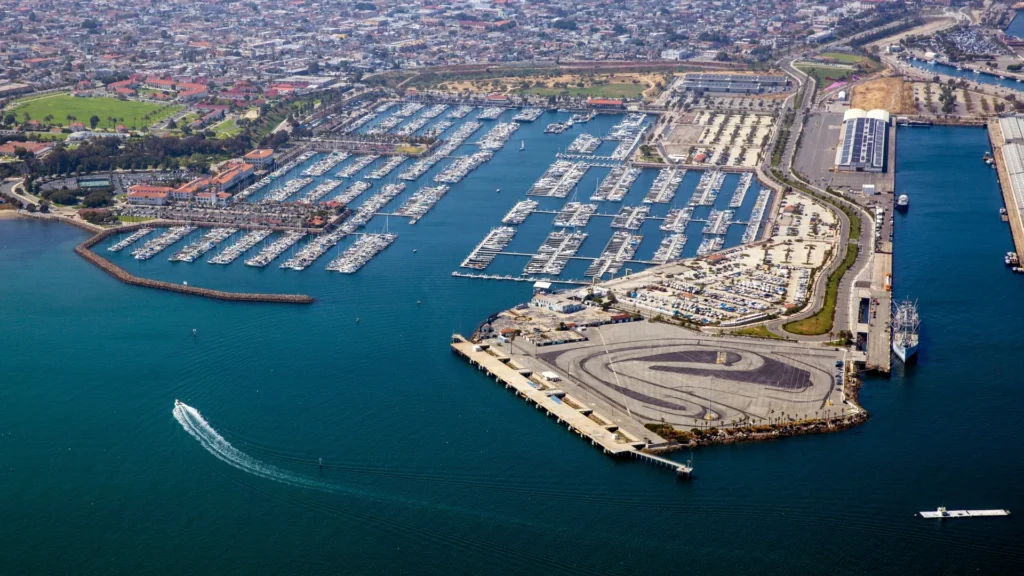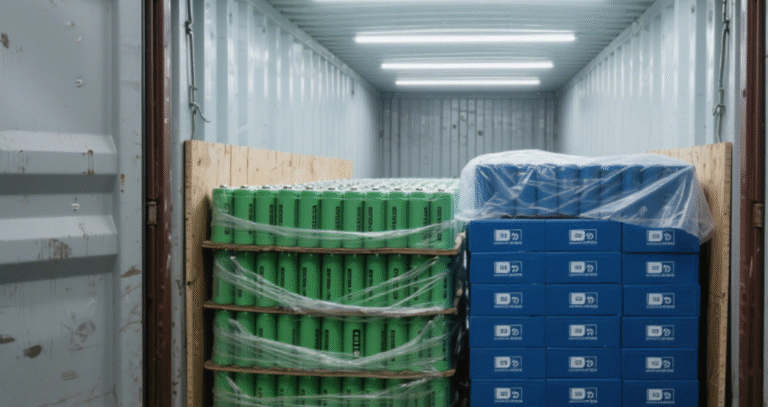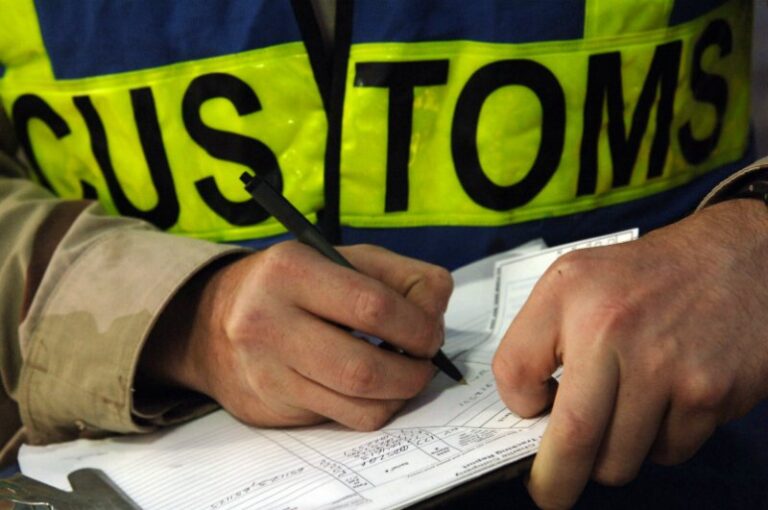A Complete Guide to Customs Clearance at the Port of Los Angeles
Introduction
The Port of Los Angeles (POLA) is the busiest entry point for goods arriving in the United States, particularly from Asia. For importers, especially small and medium-sized businesses (SMBs), understanding the customs clearance process is essential to avoid delays, unexpected costs, and compliance issues. This guide explains how the process works, what documentation is required, and why Los Angeles remains the preferred hub for U.S. imports.
What Is Customs Clearance?
Customs clearance is the procedure through which goods are officially approved to enter a country after regulatory checks and duty payments. In the U.S., this is managed by U.S. Customs and Border Protection (CBP). The process ensures compliance with federal trade laws, accurate payment of import duties and tariffs, and proper verification of shipment information.
Key Documents Required at POLA
When clearing cargo through Los Angeles, importers and their customs brokers must provide the following:
- Bill of Lading / Air Waybill – Proof of carriage issued by the shipping line or airline.
- Commercial Invoice – Lists item descriptions, quantities, and declared value.
- Packing List – Provides detailed cargo contents, used to support inspections.
- Certificate of Origin (COO) – Confirms the production country.
- Importer Security Filing (ISF) – Required for all ocean freight shipments, submitted at least 24 hours before vessel departure.
- Customs Bond – Financial guarantee to cover duties, taxes, or penalties.
- IRS Number (SSN/EIN) – Identifies the importer of record.
- Special Certifications – For restricted or regulated products, such as food or chemicals.
Step-by-Step Clearance Process at the Port of Los Angeles
- Electronic Filing – Documents are uploaded via the Automated Commercial Environment (ACE) platform.
- CBP Review – Customs officers verify information and assess compliance with U.S. regulations.
- Duty Assessment – Based on HS codes, duties and tariffs are calculated.
- Payment & Bond Coverage – Importer or broker pays fees and confirms bond validity.
- Cargo Release – Once cleared, goods are approved for entry and can continue to their final U.S. destination.
Common Challenges Importers Face
- Delays due to incomplete or inaccurate paperwork.
- Longer clearance times for LCL (Less-than-Container Load) shipments.
- Holds related to compliance checks, including the Uyghur Forced Labor Prevention Act (UFLPA).
- Sudden changes in tariffs or trade regulations.
- Extra inspections for goods subject to anti-dumping or countervailing duties (AD/CVD).
Why Los Angeles Is a Strategic Customs Hub
- Largest U.S. Seaport – POLA handles more than 8 million TEUs annually with 25 marine terminals and direct links to rail and highway networks.
- Proximity to Asia – Faster transit times compared to East Coast ports.
- Robust Infrastructure – Access to major highways (I-405, I-110, I-710) and nationwide distribution routes.
- Strong Logistics Ecosystem – Extensive presence of freight forwarders, 3PL providers, and intermodal options.
- Ongoing Investments – A $2.6 billion modernization program to enhance efficiency and digitalization.
- Access to Key Markets – Ideal for reaching West Coast states such as California, Nevada, Arizona, and Utah.

How Customs Brokers Simplify the Process
Working with a licensed customs broker in Los Angeles can help importers:
- Ensure accurate documentation and timely filing.
- Avoid penalties linked to ISF errors or late submissions.
- Manage customs bonds and tax payments efficiently.
- Navigate regulatory requirements for restricted goods.
- Achieve faster clearance and minimize costly delays.
5 Pro Strategies to Ensure Smooth Customs Clearance at the Port of Los Angeles
When importing goods into the United States, customs clearance can either be a seamless process or a major roadblock for your supply chain. At the Port of Los Angeles (POLA)—the busiest U.S. gateway for Asian imports—cargo delays are common due to documentation errors, regulatory checks, and sudden tariff shifts. For importers, especially SMBs, a single mistake can lead to costly storage, demurrage, or missed delivery schedules.
This guide highlights five advanced strategies to help your business achieve a faster, hassle-free clearance process in Los Angeles.
1. Submit Accurate Documents Through ACE
All clearance begins with documentation. Ensure that your Bill of Lading, commercial invoice, packing list, COO, ISF filing, and customs bond are correctly prepared and submitted via the Automated Commercial Environment (ACE). Even minor errors in product details, consignee information, or HS codes can delay release. Double-check before filing.
2. Use Entry Type 86 for Low-Value Shipments
If you’re an eCommerce seller importing items valued under $800 per shipment, consider Entry Type 86 under Section 321. This allows faster processing and duty-free clearance, provided it is filed before or upon arrival. Filing late can result in holds or penalties.
3. Leverage the Automated Broker Interface (ABI)
For businesses handling large volumes or multiple entries, the Automated Broker Interface (ABI) streamlines submissions directly to U.S. Customs and Border Protection (CBP). Pair this with the correct HTS codes to prevent misclassification and unexpected tariff assessments.
4. Partner With a Licensed Customs Broker
Self-filing may seem cost-effective, but clearance involves complex rules that shift frequently with trade agreements, AD/CVD measures, and Section 301 tariffs. A professional broker ensures compliance, reduces risk of penalties, and avoids costly delays.
5. Avoid Restricted or High-Risk Goods
Shipments flagged under the Uyghur Forced Labor Prevention Act (UFLPA), counterfeit products, or goods requiring special government permits (e.g., FDA, USDA) will face extra scrutiny. Confirm your cargo’s compliance before shipping to prevent seizure or lengthy inspections.
Common Clearance Challenges at POLA
Importers often encounter:
- Missing or inaccurate paperwork
- Delays with LCL (less-than-container load) shipments
- Sudden tariff increases on goods like steel, EVs, or solar products
- Extra inspections for anti-dumping/countervailing duties (AD/CVD)
- Regulatory blocks tied to trade or labor laws
Each of these issues can halt your cargo and disrupt your supply chain.
Why Work With a Customs Broker in Los Angeles
Hiring an experienced broker ensures:
- Correct and timely documentation filing
- Cost savings by avoiding storage, demurrage, and fines
- Duty optimization through proper classification
- Real-time shipment visibility and communication with CBP
- End-to-end support during inspections or disputes
Ship Faster With Linkway
At Linkway, we provide digital customs clearance solutions tailored for SMB importers. Our platform enables:
- Paperless submissions with real-time updates
- 24/7 expert support for compliance issues
- Flexible financing options to manage duties and taxes
- Guaranteed cargo handling at the Port of Los Angeles
We simplify the complex clearance process so you can focus on running your business, not chasing paperwork.
Conclusion
The Port of Los Angeles customs clearance process can be complex, but with the right preparation and support, importers can significantly reduce risks and delays. By preparing complete documents, understanding CBP requirements, and working with an experienced customs broker, SMB importers can achieve a seamless entry into the U.S. market.
If you’re looking for a reliable partner to handle your Los Angeles customs clearance, our team provides expert guidance, digital filing solutions, and end-to-end logistics support to keep your supply chain moving without disruptions.





